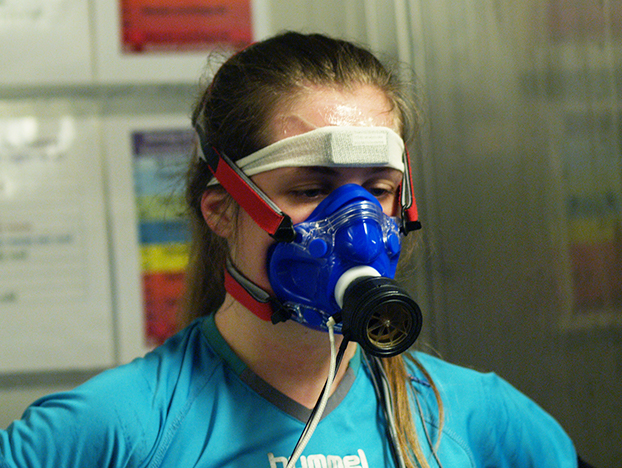Focusing on thermal environment and climate
The aerosol and climate laboratory has chambers which are able to simulate environments from -25 C° to +50 C°. Among other things, students and researchers use the climate lab to learn how different materials and products feel and work in both heat and cold. The chambers also provide the opportunity to get to know our bodies’ reactions in different climates, and studies are often performed with test participants. Some tests and measurements, however, are better accomplished with one of the lab’s many thermal mannequins.
The lab has the equipment and expertise to conduct physiological work measurements. Physical labor can be regulated and monitored with a bicycle ergometer or a treadmill. In addition to body thermometers, the lab has measuring equipment for heart rate, oxygen uptake and metabolism.

Thermal mannequins
Many types of thermal dolls (mannequins ) are used in the climate lab; 2 full body models, a hand, a head, and a baby doll.
The thermal mannequin called TORE is used to measure isolation and water vapor resistance in clothes and sleeping bags in standardized testing. With TORE we can simulate movement, which allows the complex evaluation of not only materials but also design of the garments in respect to air flows around the body and ventilation in the garment ensembles. The mannequin is often used in product development in collaboration projects with manufacturers.
Models of body parts are used for more detailed studies of thermal characteristics. For instance, the baby model has been used to study the thermal environment in neonatal incubators, and the hand model can be used in standard testing of isolation and contact resistance in gloves.

